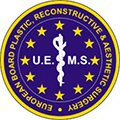
WHAT MEANS GYNECOMASTIA?
Gynecomastia is defined as the overdevelopment of the breasts in a man. It is estimated that almost 30% of the male population has this problem to a greater or lesser extent.
Although the cause is unknown in the vast majority of cases, there are many certain causes, including hormonal alterations, use of anabolics and steroids, certain medications and obesity, where the fundamental component of the breast is fat.
WHAT IS VALUED ON THE FIRST VISIT?
Some of the characteristics that are evaluated during the consultation are:
– Medical and surgical history.
– Regular medication.
– Results of previous studies.
– Existence of a history of breast cancer in the family.
WHAT SHOULD I TAKE INTO ACCOUNT BEFORE THE INTERVENTION? PREOPERATIVE RECOMMENDATIONS
There are a few considerations to keep in mind:
– Avoid certain medications that may complicate the intervention.
– Quit smoking for a period of time, before and after the intervention, since tobacco has been shown to worsen and hinder wound healing.
– Keep in mind that you will need some help after the intervention.
WHAT SHOULD I TAKE INTO ACCOUNT AFTER THE INTERVENTION? POSTOPERATIVE RECOMMENDATIONS
Some recommendations include:
– Avoid tobacco.
– Take the prescribed postoperative medication.
– Relative rest of one week.
– Use a compression band for a postoperative period of time.
HOW IS GYNECOMASTIA CORRECTED?
The surgery consists of two phases. In the first, a liposuction of the chest is performed with the aim of eliminating the fat content of the breast. Once the fat is removed, we will have to deal with the remaining glandular tissue behind the areola, which is removed through a small scar located at the inferior half of the areola.
In most cases, the skin is elastic and adapts to the new volume, so these two actions would suffice. Only in very severe cases of very large breasts may it be necessary to remove excess skin through a scar around the areola or with some other scar.
WHERE IS THIS INTERVENTION PRACTICED?
The intervention is carried out in a hospital with general anesthesia and usually with one night of hospitalization. The duration of the intervention is variable, but lasts approximately two or three hours.
WHAT IS THE EVOLUTION AND POST-INTERVENTION CONTROLS?
Although each patient has their own particularities, the postoperative course contains phases common to all patients:
During the first week:
Some stitches will be removed.
The bruises and inflammation will reach their peak.
During the second week:
The rest of the stitches will be withdrawn.
The bruising and inflammation will start to disappear and the results will start to be evident.
You can gradually rejoin your work activity.
At 4 postoperative weeks:
You will no longer need to wear the compression band any longer.
You will be able to start progressive physical exercise.
After several months
The incision line will begin to recover its colour again, although the final colour will not appear until a year after the intervention or it may even take longer.
WHAT SHOULD I KNOW ABOUT THE RESULTS?
It is an increasingly demanded surgery, with few scars and quick recovery. Well done, it generates excellent and long-lasting results. Unless you experience a significant weight change, you will be able to maintain your new figure for many years.
ARE THERE CONTRAINDICATIONS FOR THIS SURGERY?
It is a surgery that must not be performed in very obese patients, in patients who take steroids, anabolics or certain drugs, as well as those habitual consumers of hashish.



